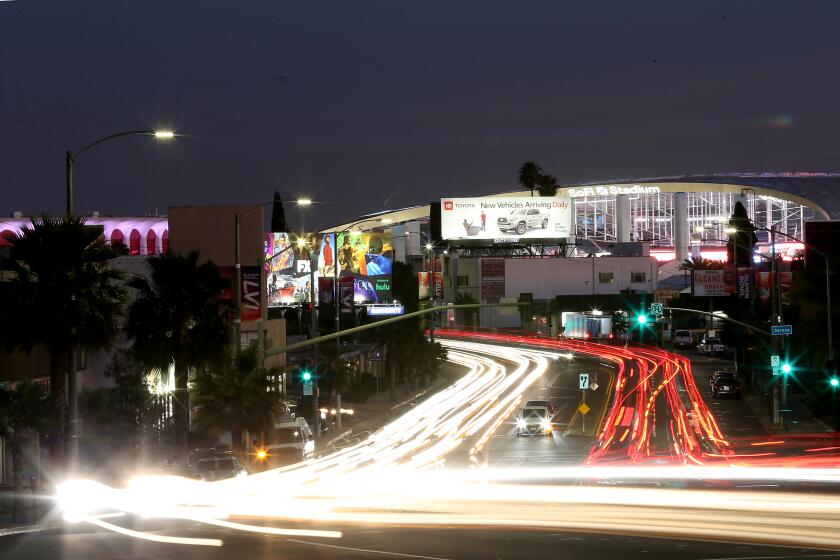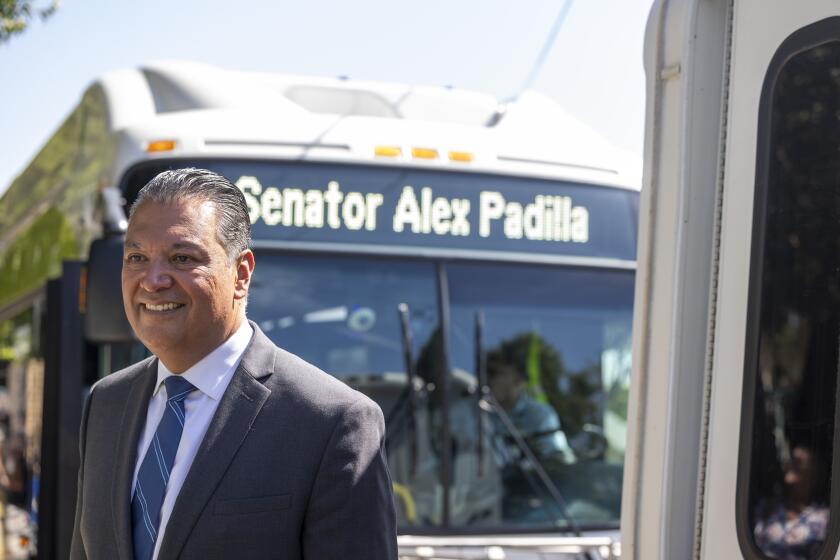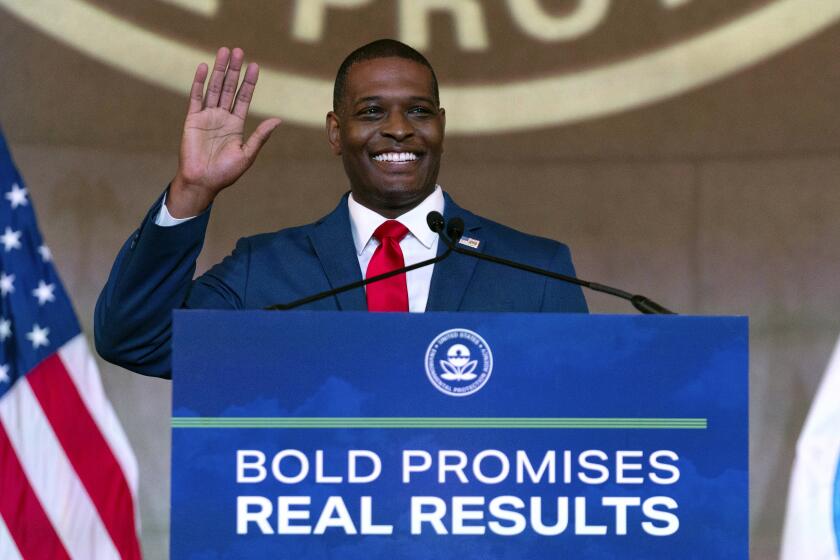Some Work Allowed to Resume on Rail Project : Safety: State officials want to be sure tunnels ventilation system can support entire crew. Cal/OSHA says citations are likely.
State officials late Monday approved partial resumption of construction on the massive Metro Rail subway project, where work has been stalled since last week by a stubborn tunnel ventilation problem.
Workers will return this morning to a subway station being completed at 7th and Flower streets in downtown Los Angeles, officials said. State safety engineers Monday evening reopened most of the station after transit officials activated a huge, new air circulation system.
Los Angeles County transportation officials also hoped to resume work today at stations near MacArthur Park and Union Station, pending the outcome of tests by Cal/OSHA inspectors.
John Adams, vice president of rail construction for the Los Angeles County Transportation Commission, said he expects construction on the entire 4.4-mile first phase of the subway to resume by Friday.
Stan Rhyu, principal safety engineer for Cal/OSHA, said that the number of tunnel workers will be limited until state inspectors are sure the ventilation system can support the 390-member subway construction work force.
Construction along the first phase of the subway was halted last Thursday by state officials after several workers complained about foul, noxious air, partly produced by the diesel trucks running through the tunnels.
No injuries were reported, but state officials said air in the tunnels was not being replaced rapidly enough to keep it safe.
The diesel trucks, which ferry equipment and material in and out of the side-by-side tunnels running from Union Station to MacArthur Park, will not be allowed in the shafts until state inspectors are certain their exhaust systems are properly controlling emissions, Cal/OSHA officials said.
“Before (the trucks) go in we are going to double-check every one of them to make sure they conform to” state safety standards, said Byron Ishkanian, Cal/OSHA’s senior engineer for mining in Southern California.
The ventilation problems are the latest in a string of setbacks for the $1.4-billion phase of the Metro Rail project, which is at least $200 million over budget and 18 months behind schedule. Last year, a fire in a tunnel near Union Station caused $2.2 million in damage. In May, leaks were discovered in a plastic tunnel liner designed to keep out methane gas, requiring $2.5 million in repairs.
LACTC officials and subway contractors worked through the weekend to correct the latest problem. But the tunnels remained shut down, at an estimated cost of $100,000 per day, after tests Saturday found that ventilation was still inadequate.
A new ventilation plan was presented to state officials Monday, calling for more fans and activation of portions of the huge air circulation system installed for the subway system.
“More fans are coming (and will be) put at each station,” said Roberta Tinagero, a LACTC spokeswoman.
Adams said the transit agency will seek to recover the costs of delays from tunnel contractors. He said the problem appears to be at least partially the fault of a subcontractor who operated the diesel trucks.
Richard Stephens, a spokesman for the state Department of Industrial Relations, Cal/OSHA’s parent agency, said an investigation of the ventilation problem is continuing.
Citations for safety violations are likely to be issued because of the ventilation problems, Cal/OSHA’s Rhyu said, although it is not clear whether contractors or the county transit agency would be cited. Because so many contractors work in the same tunnel space, it is difficult to determine who is responsible for air quality, Rhyu said.
Fines of up to $2,000 per incident can be levied against contractors for serious violations, state officials said.
If construction resumes as expected within a few days, Adams said the four-day shutdown should not further delay completion of the subway’s first phase, now set for September, 1993.
More to Read
Sign up for Essential California
The most important California stories and recommendations in your inbox every morning.
You may occasionally receive promotional content from the Los Angeles Times.






